By: CARRIE FILIPETTI
Remember back in kindergarten, when the teacher would ask us to take out our rounded-edge scissors and Elmer’s glue for arts and crafts? As creative and, to be honest, contrarian a five-year-old as I was convinced I was, I can honestly say that it never struck me to challenge the paper/glue/scissors technique. After all, that’s what a photo-collage is, right?
Not for Canadian-based and internationally award-winning mixed media illustrator Pierre-Paul Pariseau. Though he continues to pull the elements of his images from existing composition, his end product – often resembling a highly-saturated, slightly Warholian reading of Magritte—completely transforms not only the original forms with which he works but also the very concept and purpose of collage.
The surrealist juxtaposition of the animal and the human, the digitized incarnation of what is a traditionally paper-and-glue medium, the unnatural colors blending with naturalist form; all of these contrasting elements merge into a uniquely modern – uniquely Pariseau – image.
Naturally, Gadfly, always inspired by the innovators of tomorrow, recently spoke with Mr. Pariseau to get into the head of the man who thinks up…well, this: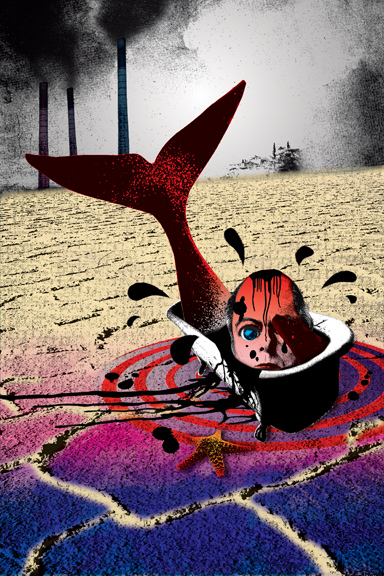
G: How and when did you first get involved in the art world?
I always loved art but didn’t really start before I was in my twenties. At that time, I did a few clumsy oil paintings, but I quickly discovered the technique of photo-collages. I was amazed by the surreal imagery that could be created using a few “cutouts” from photos in magazines. I had found my medium: it was fast, efficient, powerful. In the beginning, my collages were very simple. I used a pair of scissors and glue for many years. My big influences back then were the surrealist artists like Dali, Magritte, and others. Everything that I did was surrealist.
Later on my photo-collages became more “sophisticated” and I started to exhibit them in cafés, cultural centers and galleries. Not long after, I decided to build a portfolio and go see art directors around town. I received an immediate positive response; it was the beginning of my career as an illustrator and it continues today.
G. I understand you are self-taught. How has that affected your style and reception? What advice do you have for similarly self-taught artists?
I learned a lot simply by listening to the art directors with whom I was working, and I still do. I would say to any artist that one should listen and observe the cultural and social lives of the world around you. This will enrich your visual vocabulary and allow you to better translate your ideas and emotions. Consider your personal works as important as the commissions and vice versa, because they nourish each other.
G. Though you have been consistent in your use of mixed media, how has your style changed or evolved over time?
All the changes came naturally as I experimented with the medium. My images are a mixture of collage, acrylic paint, watercolor, pen and digital transformation in Photoshop. As mentioned, I began doing more traditional photomontages from cutouts with scissors and glue. Then came the computer— as time went by I wanted to have more possibilities to change colors and modify the cutouts. By playing with Photoshop, ideas, forms, colors, compositions and contrasts, I have found a simple, efficient and aesthetic way to reach this goal while simultaneously keeping a unifying logic throughout the images. I enjoy the extra freedom this form of art provides me; I believe it has had an impact on my inspiration. At the same time, the freedom allows me to serve my clients more efficiently. The experimentation process really has no beginning or end. With an open mind, it is a continuous flow that takes different directions depending on your needs.
G. You do personal works, commissioned works, illustrations, and murals. How do you balance the load, and what are your preferred techniques?
Personal work is just as important as professional work. There are different qualities in each. The personal projects are very important because with them you can let yourself go completely into the depths of your imagination, into a loose narrative. You can be as “crazy” as you want, you can surprise yourself as you never did before. My personal work does not always have a clear meaning; rather, it allows wide room for interpretation. Since I’m totally free and don’t have to adhere to any deadlines, it’s easier to experiment with different techniques and to come out with interesting new discoveries I can use in later commissioned works, if relevant.
That said, the constraints (subjects, sizes, delays, etc.) brought by commissioned works can be an important challenge for the spirit. They bring the artist a level of discomfort that can be, in the end, very freeing and exhilarating. Again, you can discover part of your imagination that you would probably not have otherwise known. These discoveries can be used in your personal work later on. Both kinds of artwork – the personal and the commissioned – feed each other.
As for the murals section of my site – that is fairly new and was done to inspire and entice potential clients to commission me for mural work. My artwork is not currently on any walls; however, I believe that may images would make for great murals and/or billboards.
G. How would you describe your style? What elements are most important to your work?
My work is a blend of collage, watercolor, acrylic paint and pen transformed, all of which are enhanced and colored in Photoshop. I like to add textures, gradients, and tactile elements into my illustrations. There are two main parts that go into creating my images. First, there is the composition, which includes finding the best and most interest idea for the commission by creating the collage in Photoshop step by step. Then, I apply high-contrast to each aspect of the image to remove the original colors and then add my own.
G. Who/what are your inspirations? Any particular past or contemporary artists you admire?
At first I admired and was inspired by surreal artists at large. In painting, there was Dali, Magritte, Tanguy. In literature there was Breton, Tzara and many more. Not only after, and still today, I became inspired by anything surrounding me, near and far away. It can be the music I listen to, an exhibition I see, a line in a book, a situation on the street, a comment from someone I am talking to – anything.
G. The art world has always been rife with controversy about the accessibility of pieces. What relationship do you believe art should have with its viewers? What sort of messages do you want your audience to get from viewing your artwork?
I believe that art should be as much as accessible as possible, to everyone. The art market is a big gimmick created by gallery owners and investors.
My final artwork is a digital file, so there is no original art. My work is on sale on the Internet as giclee prints on canvas and can be easily bought by young people and individuals with a low budget. It makes it hard for me to enter a gallery because of this. Collectors like to see the thickness of the paint on the canvas and continue to prefer the unique character of a work of art, even if many other artists before me have sold prints, including, of course, photographers.
As far as my work goes, I hope that my images can challenge, amuse, create a smile, puzzle and, of course, stimulate the mind of the viewer.
G. What are your goals as an artist? How would you like to be known?
My goal is simply to continue to create my images, and, at the same time, to evolve my work. What I’ll be known for in the future is up to those surrounding me. I hope they will remember me as a good person, a good artist.
G. What is next for you?
I have many upcoming projects. First, I hope to revise the book about my work by addition additional images and autobiographical information. Second, I would like to continue getting my work exhibited in galleries and beyond. Third, I would like to add an element of animation into my images. Finally, I want to start writing short stories, when time allows it, that I will illustrate with a few images and contribute to a future publication.
Want some more of Pierre-Paul? Check out more of his designs at his website.
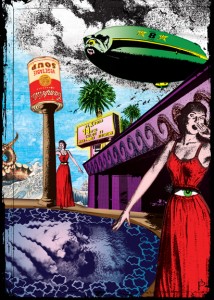
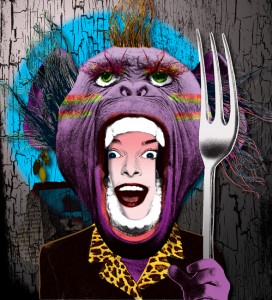
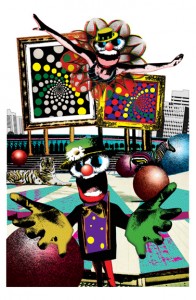
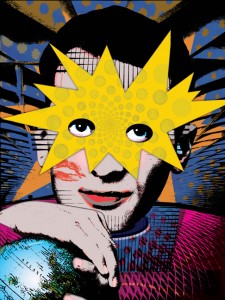
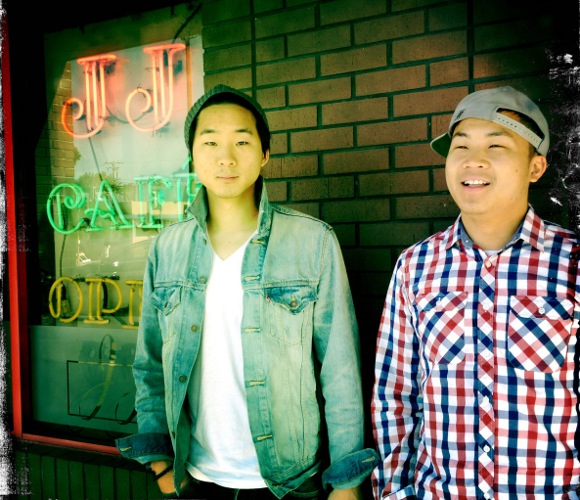
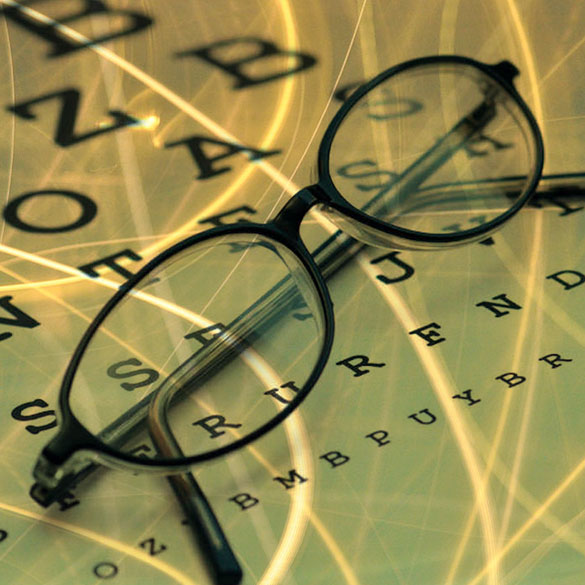
Bon interview l’artiste, continue et bon courage! @micallemand JM